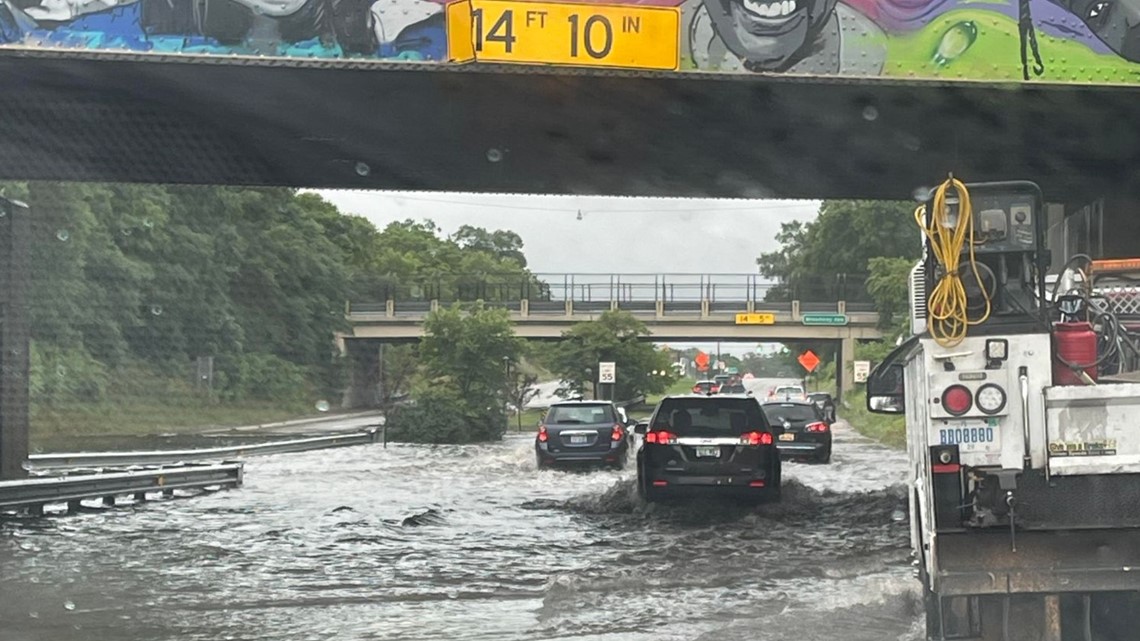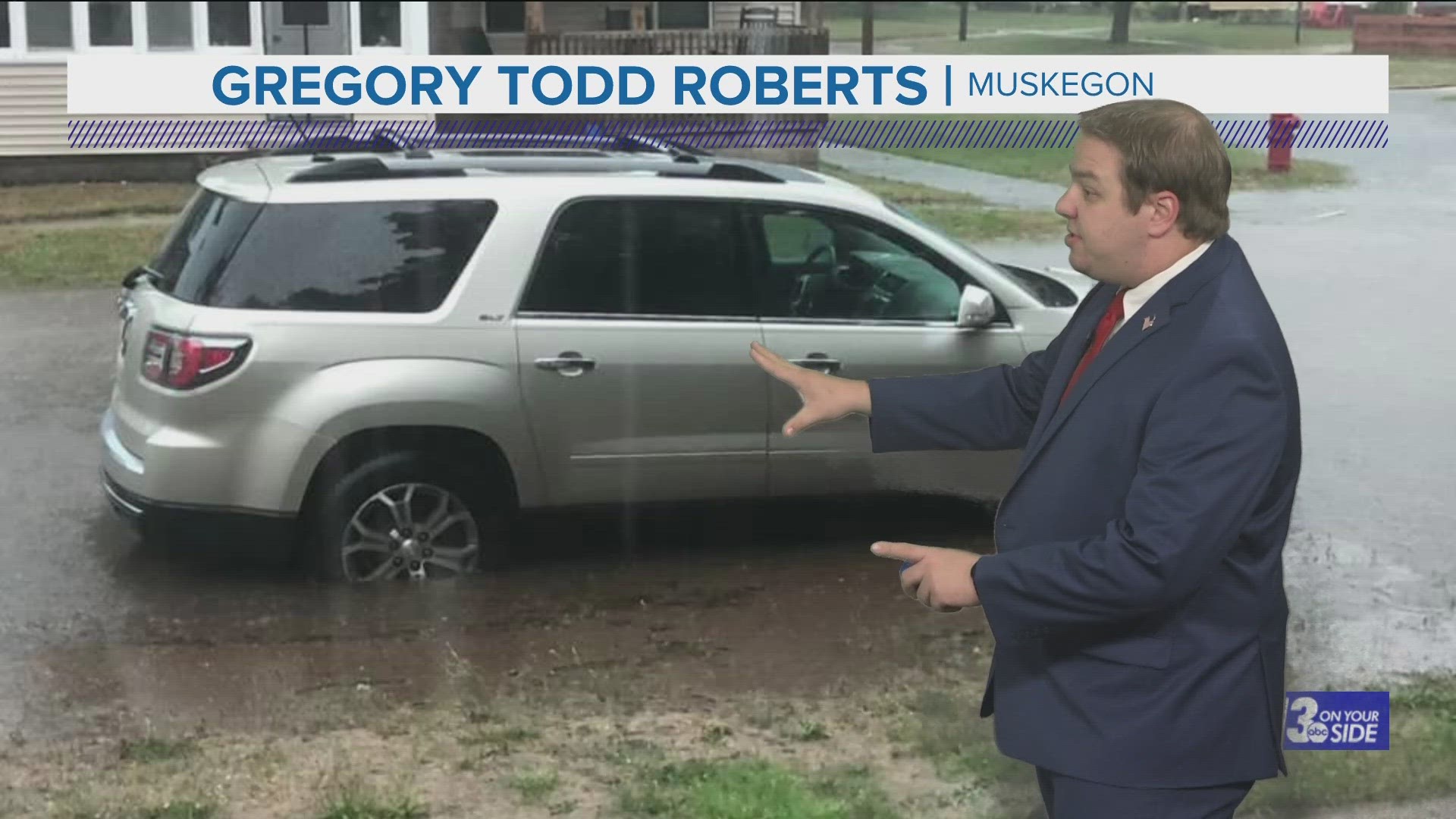MUSKEGON, Michigan — Heavy rains are leading to flooding in areas around West Michigan including Muskegon.
The city of Muskegon said Seaway Drive was closed Wednesday afternoon from Hackley to Laketon due to flooding, but it reopened around 2:30 p.m.
MDOT announced north and southbound US-31 BUS (Seaway Drive) at Young Avenue is closed due to high water.
A batch of storms over Wisconsin Wednesday morning raced toward West Michigan causing heavy rainfall.


The greatest concern for severe weather remains from noon to 8 p.m., with the most intense storms during peak daytime heating.
During that timeframe, all modes of severe weather will be possible. Models don't have a great agreement between storm placement, but everyone on I-96 and to the south should be prepared for storm activity all afternoon and evening long.
Drivers are being asked to avoid the area until the water recedes.
You should have multiple ways to stay weather aware and receive critical weather information.
There are five direct ways in which you can receive weather alerts.
1. NOAA Weather Radio
The first is NOAA Weather Radio. We often refer to them as the “smoke detector” for severe weather, because they will automatically sound an alarm in the case of a natural disaster or severe weather.
2. Local Broadcast
There is also always your local TV station. The 13 ON YOUR SIDE Weather Department streams on-air and online during an active storm.
3. Radio Station
Local radio stations should alert you if a storm is in your area. You can even set up devices like Alexa and Google Home to alert you with weather notifications.
4. Smartphone
Your smartphones also offer numerous ways to receive critical weather alerts. We have a 13 ON YOUR SIDE Weather App that will allow you to track the storm and receive alerts.
5. Outdoor Sirens
Outdoor sirens are also an option, as they will go off in the threat of immediate danger, but are only meant to be heard outdoors. So, if you are inside this should not be how you receive your severe weather alerts. Outdoor sirens can also be unreliable, difficult for those hard of hearing, and go off for other reasons beyond tornadoes.
While all of those methods are great, none of them are foolproof. So we suggest having two ways to receive alerts at all times.


►Make it easy to keep up to date with more stories like this. Download the 13 ON YOUR SIDE app now.
Have a news tip? Email news@13onyourside.com, visit our Facebook page or Twitter. Subscribe to our YouTube channel.

